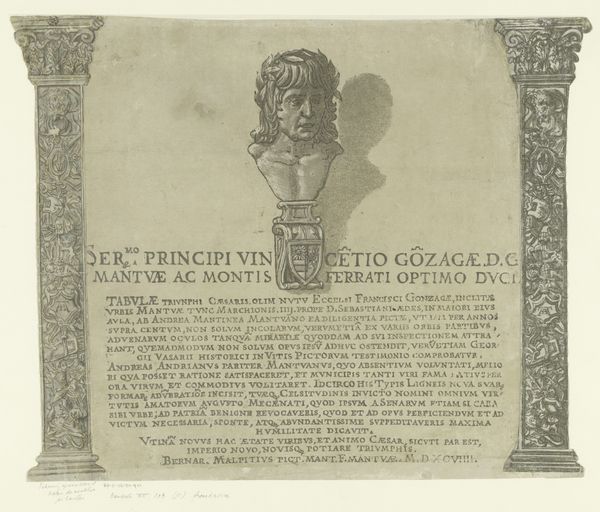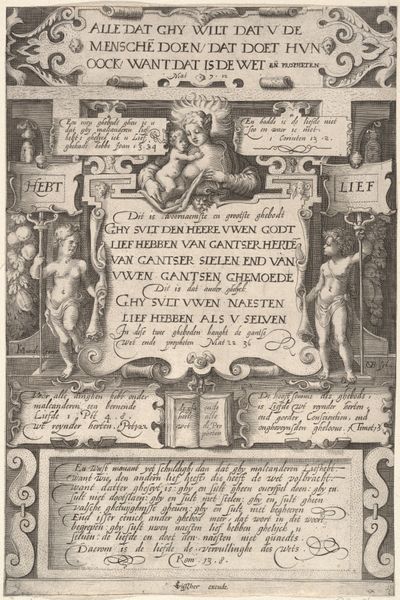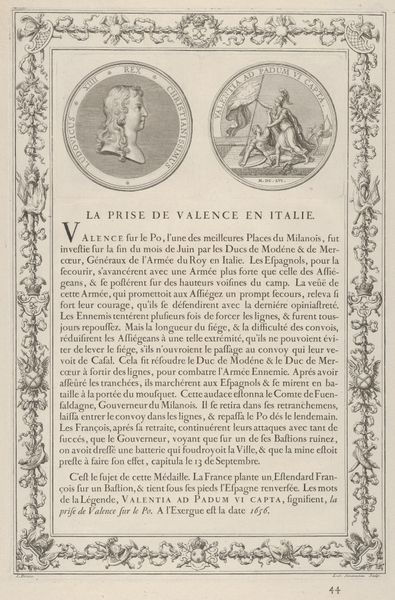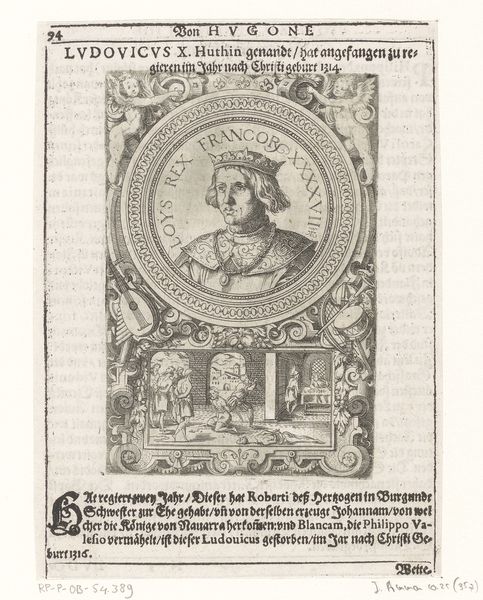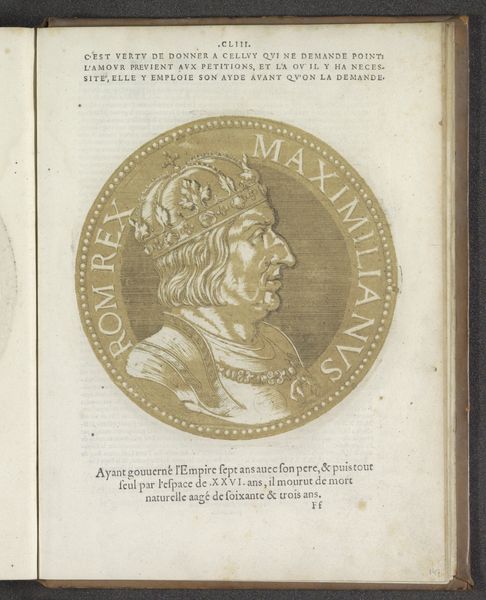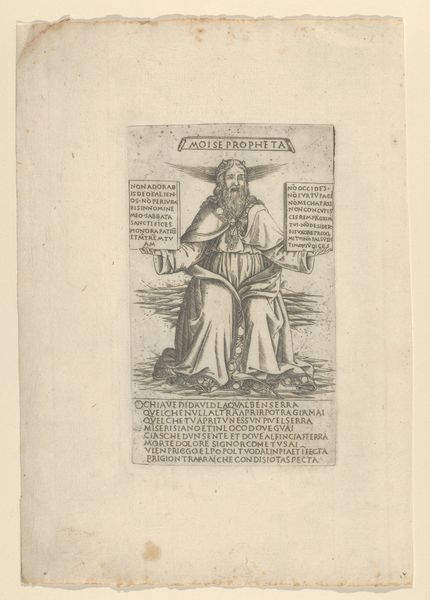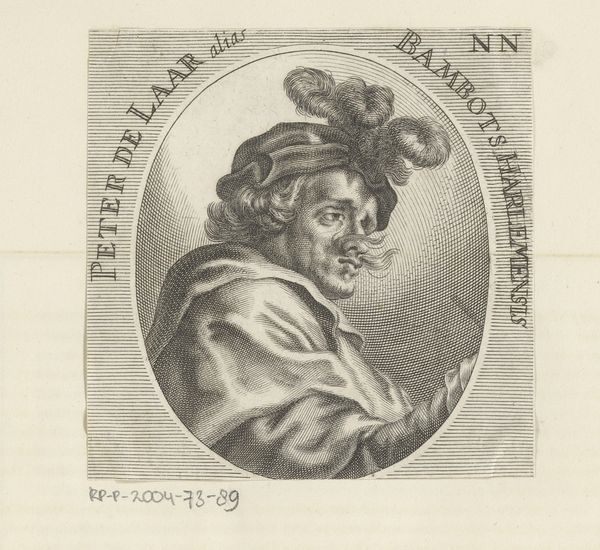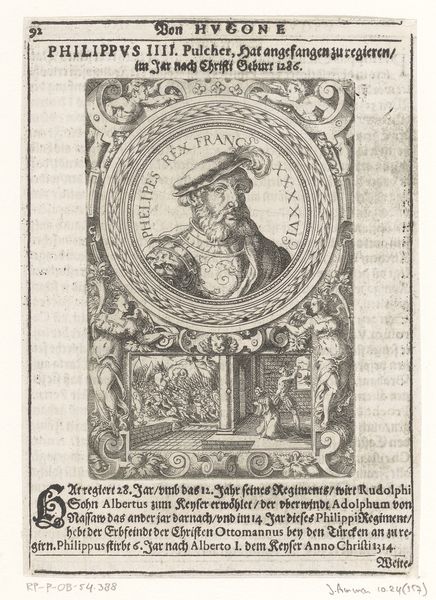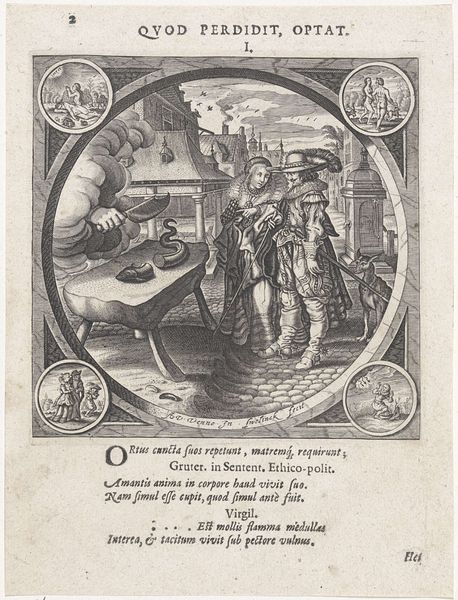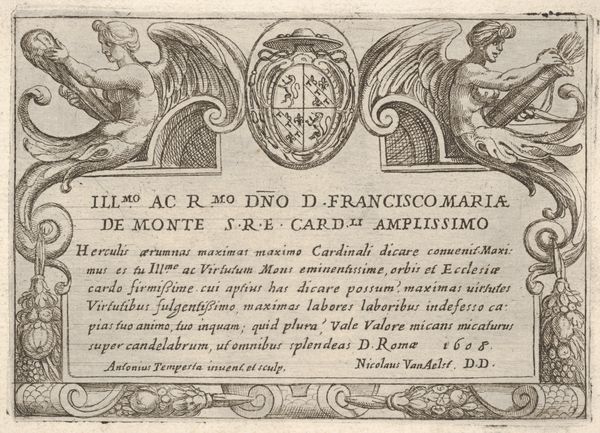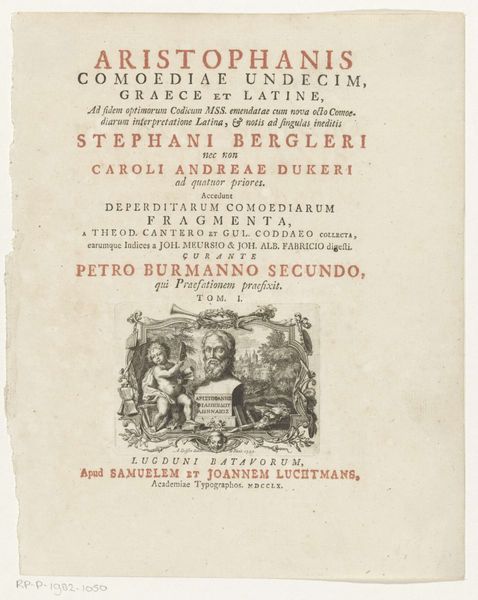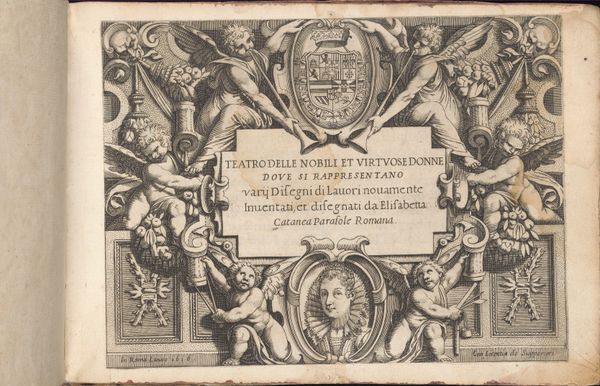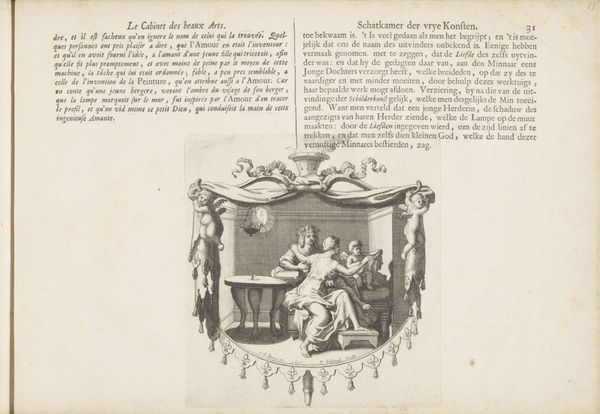
print, engraving
#
portrait
# print
#
11_renaissance
#
history-painting
#
italian-renaissance
#
engraving
#
calligraphy
Dimensions: height 383 mm, width 375 mm
Copyright: Rijks Museum: Open Domain
Made in 1598 by Andrea Andreani, this print immortalizes the artist Andrea Mantegna. The bust, adorned with a laurel wreath, immediately evokes classical antiquity, a symbol of artistic and intellectual triumph tracing back to the Greco-Roman tradition. We see this motif echoing through history, from ancient depictions of Apollo to Renaissance portrayals of poets and scholars. This emblem reappears across centuries, each time imbued with the weight of tradition and the aspirations of its wearers. The wreath signifies not just achievement but a connection to the past. The gesture of presenting Mantegna as a classical bust carries a psychological weight. It is a form of ancestor worship, evoking powerful feelings of admiration and aspiration. It speaks to a collective memory of artistic excellence and the desire to emulate past glories. This cyclical return to classical ideals is not merely imitation, but a continual renegotiation of cultural values. The symbol resurfaces, evolves, and takes on new meanings across historical contexts, enriched by each iteration.
Comments
No comments
Be the first to comment and join the conversation on the ultimate creative platform.
